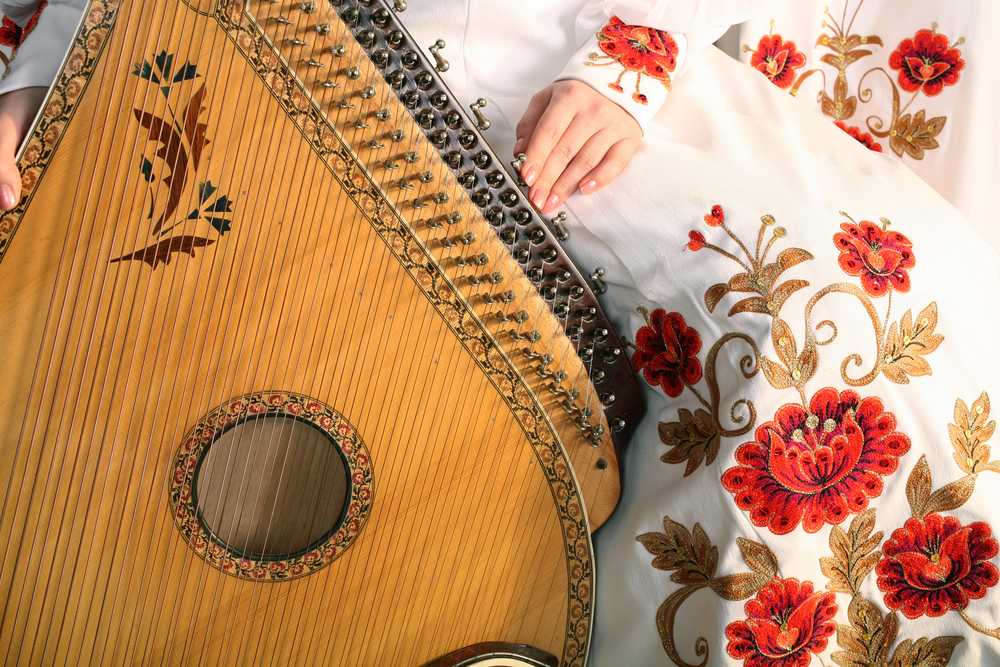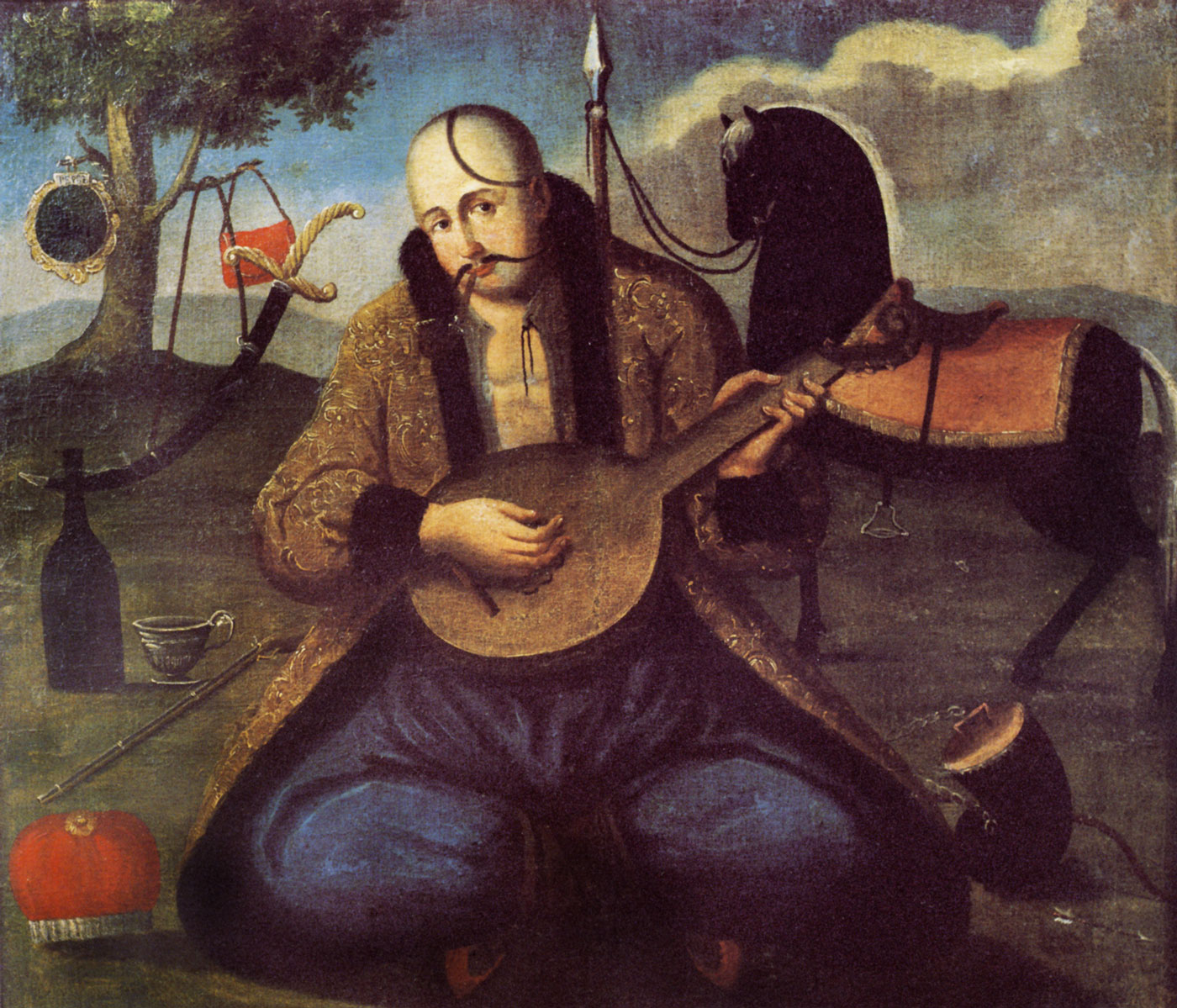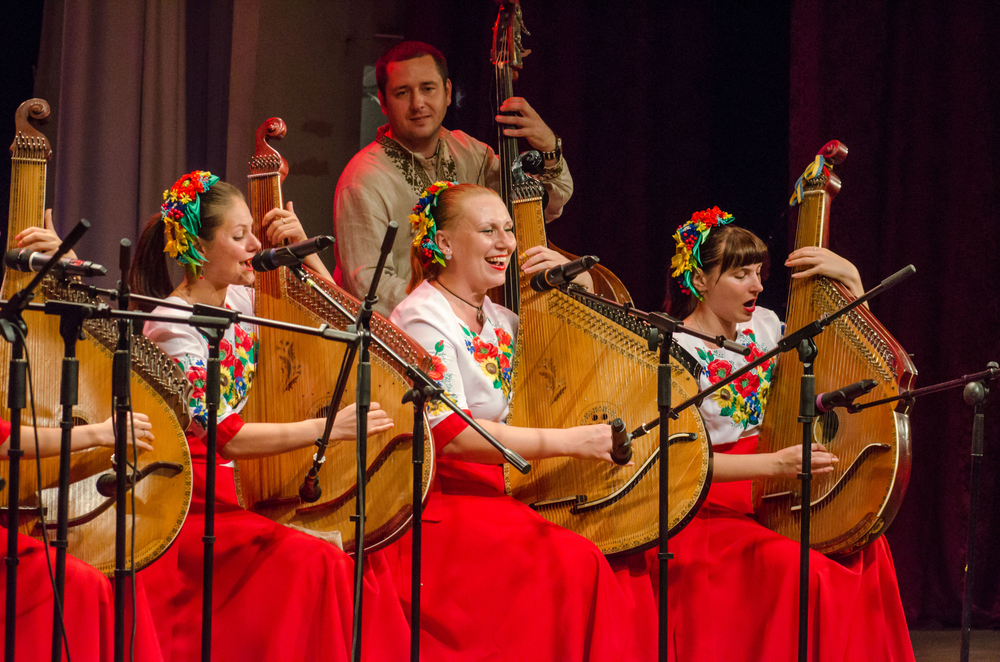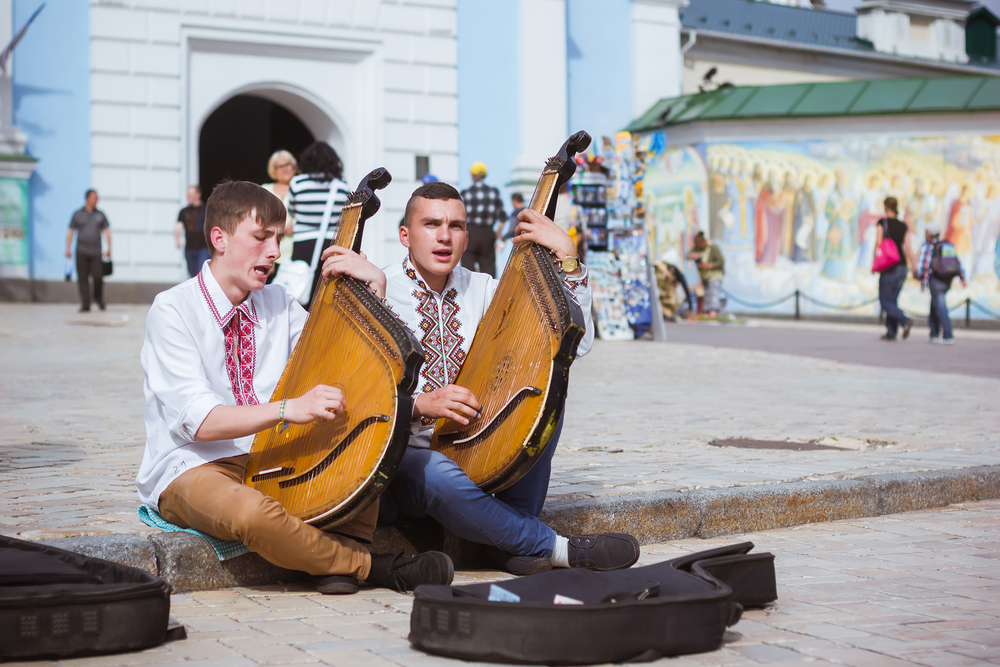Origins
Bandura’s history is incredibly rich — and just as peculiar. To start with, etymology of the word is still disputed about: some scholars state that word “bandura” entered Ukrainian via Polish, some insist on direct borrowing from Latin, and others are sure that Greek is the right answer.
Besides, it is unknown when exactly bandura has appeared in Ukraine. The first documented record, however, dates back as far as the 11th century — the instrument can be seen on a fresco of court musicians in the Saint Sophia Cathedral in Kyiv. While the origin stays a mystery, bandura has become an instrument that embodied Ukrainian folk music very quickly.
First versions of bandura were quite similar to its distant relative — kobza. They both were rather small, had opaque shape and several strings, and both changed throughout history. The main change lied in addition of new strings, and the 16th century marked an appearance of prystrunky — strings that were placed on the corpus of the instrument, opposed to traditional placement on fingerboard. This meant that each string produced only one note, and musicians had to polish their skills to reach the needed sweetness of melodies.
Instrument of Cossacks

Image: Cossack Mamay, Ukrainian folk hero usually portrayed with bandura or kobza
Bandura is well known as an instrument beloved by Ukrainian Cossacks — since the 17th century, Zaporozhian Sich had countless choruses and orchestras, where bandura played the main role. Bandura players then formally became part of the Zaporozhian Army and performed Cossack military music along with trumpeters, which gave a new sounding and purpose to this usually sweet and gentle Ukrainian instrument.
The rise of bandura’s popularity began with era of kobzars — travelling players from villages that mastered string instruments. The most intriguing and mind blowing fact about kobzari that is often missed in foreign sources is that many of them have been blind. Their professionalism was highly respected in every region in Ukraine, and calling kobzars beggars for money was a big insult.
Read: Khortytsia: the Land of Cossacks
Becoming a kobzar was one of the ways to be closer to people and history: some songs, called ‘dumy’ about Turkish-Tatar invaders and Polish nobility actually became a reliable source, as kobzars were often present during the events they sang about. Other songs were dedicated to glory of historical heroes: Bohdan Khmelnytskyi, Petro Konashevych-Sahaidachny, Ivan Bohun, and Marusya Boguslavka.
The latter was incredibly popular at the time: Duma about Marusya Boguslavka tells a story of a brave young girl, captured by Turks and sold into a harem. In time, she gained trust of her husband, and got access to the keys of palace where they lived. The keys gave access to prison, where a group of Ukrainian Cossacks has been kept for 30 years. Marusya used her privilege to free her fellow people, but stayed in the harem, as she got used to the life in harem and never knew anything else.
Throughout the centuries this duma obtained more than 25 variants, and just as many ways of performing. The most renowned Ukrainian writer and poet, Taras Hryhorovych Shevchenko, printed Duma about Marusya Boguslavka in his primer, and Mykhailo Starytsky, one of the founders of professional Ukrainian theater, wrote a drama based on the story.
Professional history

Starting from the late 18th – early 19th century, terms bandura and kobza became synonymous and were used ubiquitously. Kobzars evolved from folk singers to professional performers: three regional schools were opened in Chernihiv, Poltava, and Slobozhan. Each of them had their own style, and focused on various themes in repertoire. Blind Kobzars united in professional groups, called bratstva, where young scholars learned the skills of bandura from wise masters. These bratstva also taught so called Lebiiska language — a secret professional language of blind Ukrainian musicians that passed from generation to generation and could only be taught inside bratstvo.
Read: The Oldest Universities in Ukraine
At the beginning of the 20th century, chapels gave a way for a further development of bandura instrument in Ukraine. Founded by renowned bandurists, chapels made a great contribution into bandura history, as well as traditions of choral singing.
Unfortunately, 1930s marked the beginning of Soviet repressions, when Ukrainian identity was persecuted and outlawed. Many kobzars were arrested and murdered and some disappeared without a trace.
Only in the 1970s bandura faces a new revival — a famous bandurist Roman Hrynkiv produced a new bandura for his concerts. The instrument was highly acclaimed by critics for its technical capabilities and rich sound. This marks the new beginning of contemporary history of bandura.
Curious facts about bandura instrument
Nowadays bandura isn’t simply bringing to life old traditions of dumas or folk songs. Young and enthusiastic musicians experiment with the sound and performance, which gives a new life to this traditional instrument. For instance, radio stations often host shows where bandurists perform contemporary music hits: Scorpions, Coldplay, Metallica, David Guetta, Adele and themes from popular TV-series like Sherlock BBC all found a new sounding with bandura. Videos of such performances can be found on Youtube.
Due to its unique structure, bandura also shines in jazz — Соковитий джаз (Juicy Jazz) trio of bandurist, pianist and saxophonist performs traditional Ukrainian songs in a jazz manner.
Besides, bandura finds its place in repertoire of popular Ukrainian musicians like Onuka, who incorporates gentle bandura in electronic music, and rock & hip-hop bands like ТНМК, Тартак, as well as famous musician Oleh Skrypka, the leader of Vopli Vidoplyasova band.
Read: Famous Kyiv Open-Air Museums
Those who want to hear bandura live have a chance to visit Kraina Mriy – a folk festival held every year on Spivoche Pole in Kyiv. Organized by Oleh Skrypka, it introduces people to Ukrainian culture and folk music.
Bandura has evolved throughout history and stays one of the culturally richest, multifaceted and simply astonishing instruments in Ukraine.
Photo source: shutterstock.com, museumshevchenko.org.ua. All images belong to their rightful authors.
All About Bandura Instrument
Ukrainian traditional music is mostly known for folk songs lyrics and strong voices. Often many peculiar instruments are left in shade, even the ones you can’t imagine in Ukrainian culture. One of them is bandura, which charmed millions throughout history with its rich sound; it has a strong influence on music, not only in traditions, but also on contemporary musicians. Let’s find out more about this Ukrainian traditional music instrument.







